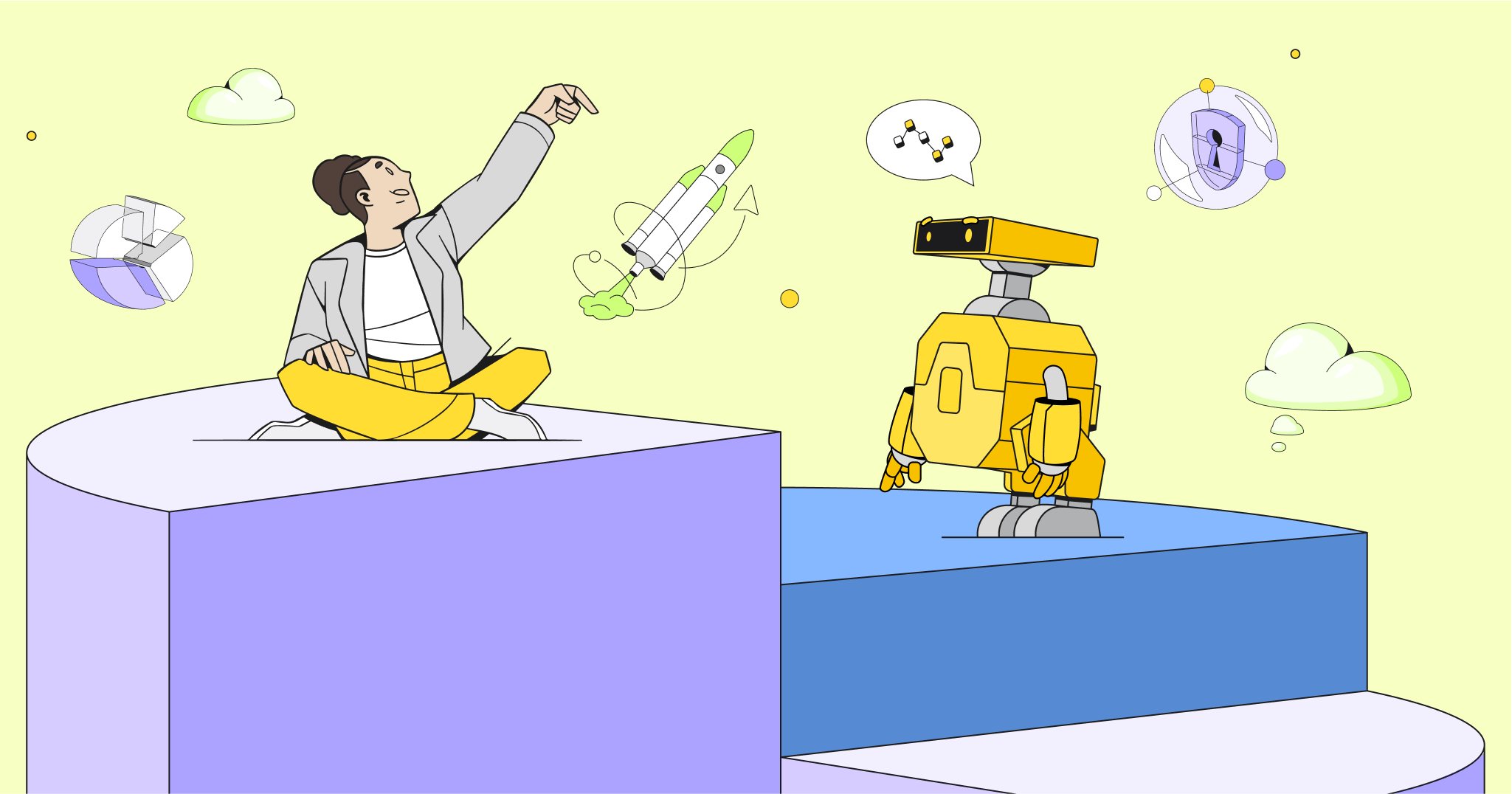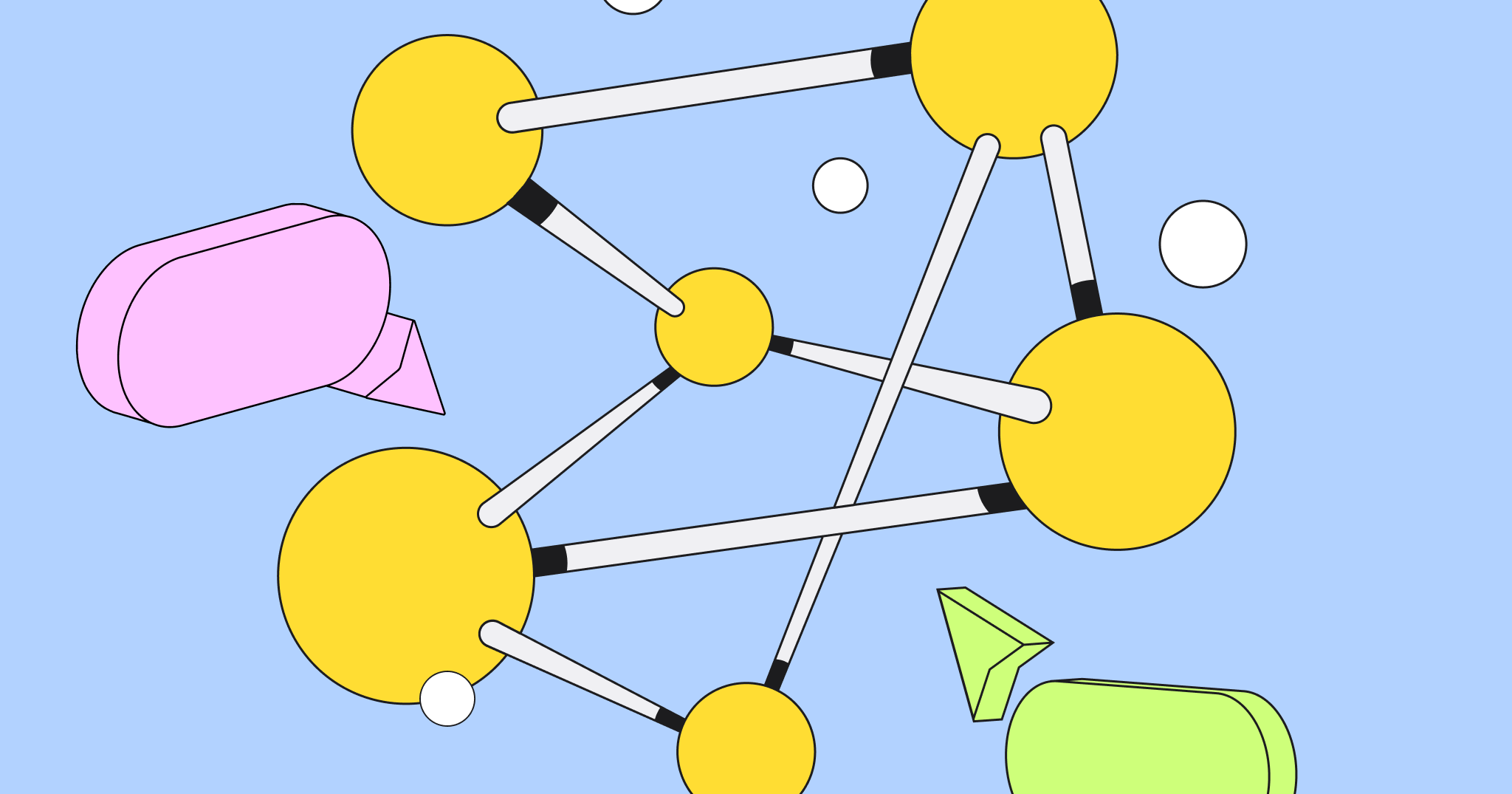The era of mainstream AI is here, raising critical questions about its impact on our lives, jobs, and businesses. Which tasks should remain ours, which should be handed to AI, and where is human-AI collaboration most effective?
This uncertainty can feel uncomfortable, but it’s also fertile ground for creativity and discovery. Just as the scientific method demonstrates, hypothesis-driven testing can lead curious minds to unimaginable progress. Now is an opportunity to experiment with AI in our businesses – testing hypotheses to guide us towards answers and innovation.
Mistakes will be made, but by fostering a culture of experimentation and transparency, we can make this a shared and fruitful effort – not a top-down directive.
In this blog, I’ll explore how to build such a culture, share practices we’re adopting at Miro, and outline steps for leaders to embrace AI’s potential. In this fast-moving ‘autonomous age,’ leaders must act—waiting on the sidelines is not an option.
What It Means to build a Culture of Experimentation and Transparency to embrace AI’s full potential
A culture of experimentation encourages curiosity, flexibility, and continuous learning. This is especially important with AI, which is unpredictable and constantly evolving. The best way to understand AI’s value is through experimentation—starting with the questions we want answered, forming testable hypotheses, and running experiments.
For example, we might ask, “How will AI speed up our work?” leading to the hypothesis, “If we use AI tool X, we’ll reduce time to market by 50%.” In one test, Microsoft programmers using GitHub’s AI co-pilot completed tasks 55.8% faster. Similarly, BCG ran a test with 758 consultants, showing AI improved the quality of output by 40%, with lower performers seeing a 43% boost and top performers improving by 17%.
Transparency is just as critical. In his book Co-Intelligence, Professor Ethan Mollick argues that to fully harness AI, we must embrace it as a collaborator, understanding its nuances and limitations. He writes, “Users who intimately understand the abilities and limitations of AI tools are uniquely positioned to unlock AI’s full potential.”
For experimentation to thrive, there must be openness at all levels—openly discussing both failures and successes, sharing knowledge across teams, and ensuring that insights aren’t siloed. When leaders model transparency, it fosters collaboration and shared learning across the organization.
It’s early days, and there will be many ways to create a culture of experimentation and transparency. To show how this can work, I’ll share some of the methods we’ve been using at Miro.
What We’re Doing at Miro
At Miro, we’ve taken deliberate steps to foster a culture of experimentation and transparency as we explore the potential of AI. The approach centers around creating a safe space for teams to experiment with AI tools, including our own, gathering learnings, and sharing those insights across the company.
Here’s what we’re doing:
- Firstly in the product: We’re developing AI-powered tools including AI Sidekicks, which serve as powerful collaborators on the canvas to support Miro users in a myriad of ways. From aiding the synthesis of data into actionable insights, through to generating ideas and suggestions for next steps. We’re also empowering users with AI tools that visualize concepts, and move more seamlessly from unstructured creative work into structured and shareable output.
- Dedicated leadership: To support and scale our AI experimentation, Miro appointed a Director of Business Transformation, Tomás Dostal-Freire, to lead our AI initiatives. Tomás oversees experimentation and insight-sharing efforts across departments, ensuring alignment and accountability.
- Through internal comms channels: We distribute regular comms through email and Slack that highlight how different teams are using AI. This serves as a platform to showcase successful experiments and lessons learned, while also sharing prompts and video explainers to demonstrate both best practices and failed attempts.
- Hackathons and Recognition: We also run AI hackathons where teams come together to solve problems using AI. These events encourage collaboration and creativity while offering an opportunity to showcase solutions that benefit the company as a whole. Teams and individuals are recognized for their contributions, incentivizing further experimentation.
Through these practices, Miro aims to cultivate an environment where AI experimentation is not just permitted but actively encouraged. This has led to rapid learning and a quick adoption of AI tools.
Harnessing the potential of AI
To harness the potential of AI and foster a culture of experimentation and transparency within your organization, consider these steps:
- Promote Open Dialogue: Begin by initiating conversations within your organization about the role AI can play in your business. Be transparent about the opportunities and limitations of AI, and encourage your team to share their ideas and concerns.
- Implement Frameworks for Reflection and Iteration: Use structured approaches to experimentation and conduct regular retrospectives to learn from AI experiments. The Miroverse Hack AI Your Role can help identify how AI can enhance daily activities and build a broader business roadmap.
- Form AI Committees or Task Forces: At Miro we’ve seen the benefit of having leadership roles dedicated to our AI transformation. Look to create cross-functional teams responsible for driving AI experimentation across the organization. These teams should also monitor regulatory changes and ensure that the organization’s AI strategy evolves as technology progresses.
- Incentivize Insight-Sharing: To encourage experimentation, establish reward systems that recognize and celebrate the sharing of AI insights. Whether it’s through internal newsletters, hackathons, or public recognition, make sure your employees are incentivized to contribute to the collective knowledge pool.
- Lead with Transparency: As a leader, demonstrate transparency by openly sharing your own successes and failures with AI. This sets the tone for the entire organization and helps break down silos, allowing for greater collaboration and innovation
- Stay Ahead of Ethics and Regulation: Stay informed about legal requirements like the EU AI Act. Establish steering groups to monitor changes and adapt your practices accordingly, ensuring that your organization’s AI experimentation remains ethical and compliant.
As we enter the ‘autonomous age’, businesses must embrace experimentation and transparency to fully realize AI’s potential. By fostering a culture where teams feel empowered to test, learn, and share, organizations can unlock the true value of AI—driving not only efficiency but creativity, collaboration, and meaningful work.
At Miro, we’ve seen firsthand how a culture of experimentation can lead to transformative results. AI has the power to accelerate workflows, enhance creative processes, and redefine the future of work, but its success depends on our willingness to experiment, share, and learn together.




